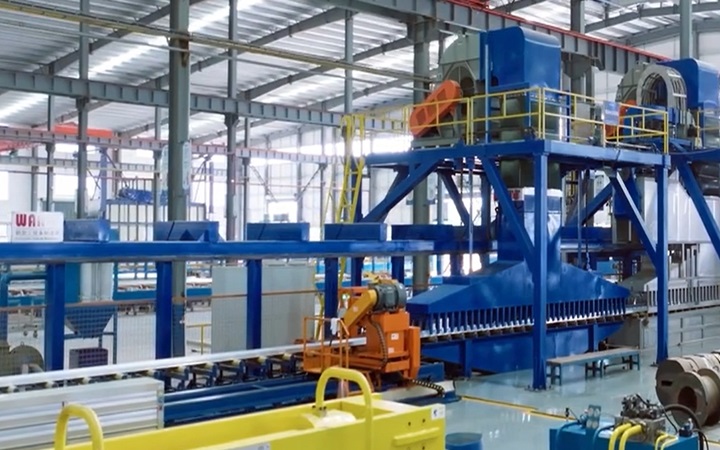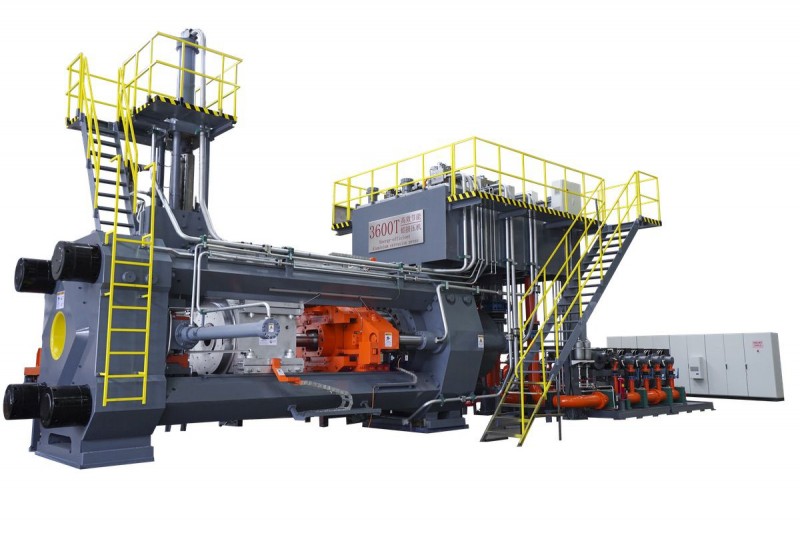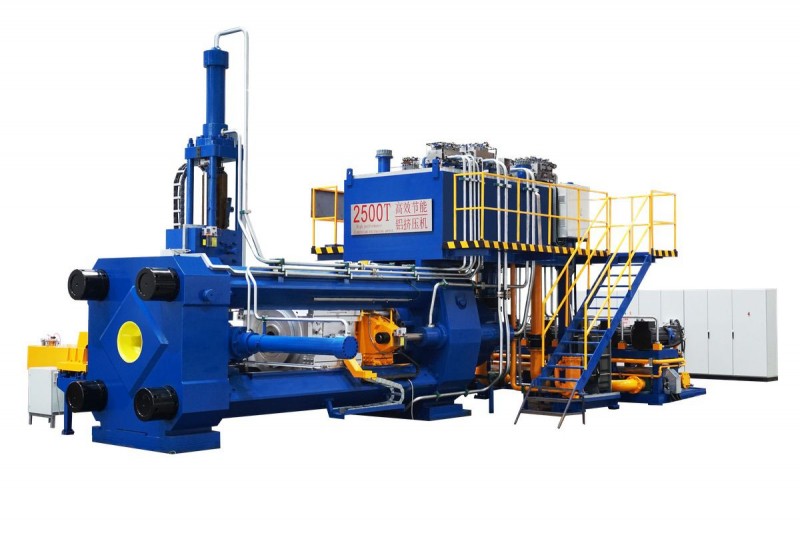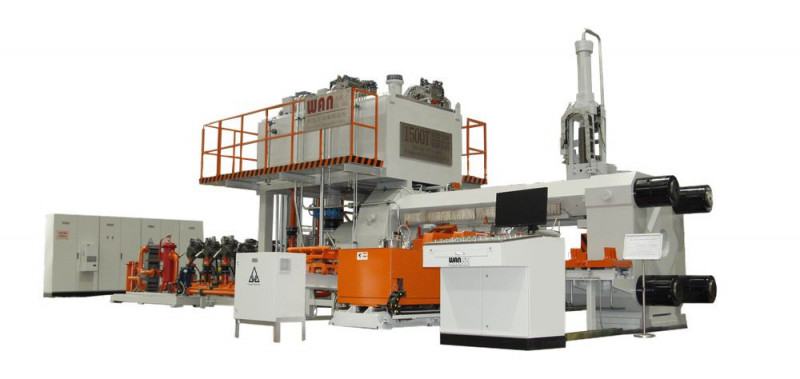One of the ways building designers, architects, and engineers are achieving sustainable building standards is through the use of aluminum in various applications. Aluminum naturally occurs on earth and is cheap to mine and process into different forms using various methods, including extrusion. This is a look at how aluminum extruders boost green building and sustainable construction standards.

An aluminum extruder is an industrial setup for pressing aluminum alloy billets into elongated profiles with uniform cross-sections. Aluminum billets come in alloys comprising aluminum as the primary metal, plus an intimate combination of elements such as zinc, copper, magnesium, tin, silicon, and manganese.
Aluminum extrusions have unique properties that make them useful in many different building and construction projects. These include:
Aluminum extrusions are typically lightweight yet strong thanks to the metal's excellent strength-to-weight ratio. It weighs about 65% less than steel. This makes aluminum extrusions popular structural materials.
Naturally, aluminum forms a protective layer of oxide that makes the metal less reactive in the presence of water and oxygen. Moreover, aluminum extrusions can undergo various surface treatments to improve hardness and corrosion resistance. This reduces the need for constant replacement of parts and structures.
Aluminum is lightweight and soft, meaning it's easy to cut and mold into desired shapes with little effort and turnaround time. Additionally, working with profiles is easy. They are easy to bend and force around contours and corners and join together without the need for welding.
Aluminum reflects heat and visible light really well, making it a good material for building energy-saving properties, whether used to make structures that reflect heat away from the building or distribute natural light into dark indoor spaces for maximized daylight autonomy.
You won't need to carry out special maintenance on aluminum parts, whether painted, powder-coated, or electroplated. Just simple routine cleaning is enough to make aluminum look new. There's no need for the use of chemicals or agents, which translates into significant cost savings and also ecological advantages because there won't be any chemicals or toxins ending up in the environment.
Aluminum has a high scrap value. Scraps from pre- and post-consumer applications can be re-melted and put to other uses again and again without compromising quality. Indeed, only ¼ of aluminum in existence is from new mines, the rest is from recycling efforts resulting in energy savings of up to 92%. Recycled aluminum is a combination of auto parts, beverage cans, building parts, and other consumer throw-away with scrap from industrial manufacturing processes.
As mentioned, aluminum profiles offer a high strength-to-weight ratio and this is not only useful when designing building frames and parts but also during transportation. Reduced mass means easier transportation, and reduced fuel usage and emissions.
Most aluminum profiles used as building products and components arrive at the job site already pre-fabricated and assembled. This is done in sheet metal factories, making any generated scrap available for recycling while minimizing clutter on construction sites. Additionally, prefabricated speed up construction projects because site engineers and architects don't have to waste their time molding and assembling parts themselves.
It reduces the workload and saves on construction costs. Plus, scaffolding ramps, walkways, and stairs can be set up quickly, making the site safe and ready for work.
Aluminum building components and their surface treatments are safe for both people and the environment. Alloys of aluminum do not catch fire and only melt when temperature rises beyond the 660°C mark. That being said, don’t just clad your aluminum panels with combustible materials thinking it’s all going to be alright. You better get familiar with your local government building regulations regarding the use of aluminum claddings. For example, exposing aluminum to temperatures above 150 °C will kickstart deterioration such that the metal’ structure becomes weaker with every increase in temperature. Follow the manufacture’s guidelines in conjunction with other fire safety measures to protect your aluminum from deterioration and ensure the safety of your building.
From contributing optimized and systemic solutions for energy efficiency, and indoor environmental quality to having properties that guarantee a high scrap value, aluminum is a useful material in green building designs. Take a look at these green advantages of building with aluminum extrusions.
A building's envelope comprises windows and doors, exterior walls, foundations, roofs, sealants, insulation, flashing, and vapor barriers. Think of it as the skin of a building, separating the controlled, comfortable interior from the uncontrolled and often harsh exterior environment. It protects the occupants from the elements and ensures the energy efficiency of a building.
Aluminum extrusions are important components of high-performance building facades. Engineers can use extruded parts to make curtain walls, windows, and framing systems that accommodate multi-pane insulating glass without becoming too heavy or unstable. These multi-pane glasses accommodate layers of air that serve as insulation, keeping heat from leaving or getting into the building easily.
Aluminum light shelves can also be installed inside a building to bounce sunlight within the space evenly for reduced glare. Light shelves enhance daylight quality, making it comfortable to work and navigate within the room without needing too much artificial lighting.
Apart from light shelves, aluminum frames can be used to support large glass panels allowing more light into the building and treating occupants to broad views. Introducing daylight minimizes dependency on electrical lighting during the day. Allowing more light into your building will make occupants happy and increase productivity.
Another use of extruded aluminum in green design involves sunshades. These can be installed on the building's exterior to shade the interior and keep it cool even when the exterior temperatures are reaching a Sahara-level high. Sunshades reduce solar heat gain and overdependence on air conditioners.
Engineers can integrate photovoltaic systems and solar thermal devices into aluminum facades and other aluminum components. It can be done easily and at a low cost without making the frames or components extra heavy, thanks to the metal's unique formability and strength-to-weight ratio.
For example, engineers can integrate photovoltaic systems into aluminum facades to make aluminum-glass-PV facades. They can also add these systems and solar thermal devices into other aluminum parts of a building to serve as a skin for aesthetic and insulation purposes as well as renewable energy generation.
Apart from solar panels and PV systems, aluminum's lightweight and corrosion-resistant makes it popular with micro wind turbine manufacturers. The energy generated by these renewable energy systems can be used by the occupants of the building or channeled into the power grid for rewards.
Aluminum extrusions can be joined into intricate shapes, resulting in stable, strong, leak-proof windows and doors that can be manually or automatically opened and closed to control natural ventilation for desired views and thermal comfort. Generally, windows and doors made of aluminum are super easy to handle and install, thanks to the material's lightweight characteristics. It also makes them easy to open and close without too much effort. It doesn't expand easily in the sun to create problems for the occupants when it comes to closing time.
Even high-performance frames made of wood or vinyl feature aluminum cladding to protect them from elements such as sun, snow, wind, and UV rays, lest they rot, warp, fade, or crack easily. Aluminum cladding also protects from scratches and dents, reducing maintenance requirements and making it easy to clean and maintain aesthetic looks. Above all, it can be combined with thermal breaks to boost overall insulation performance, thereby preventing excess heat loss or entry into the building.
Aluminum extrusions are useful in making various tubular daylighting devices. TDDs feature rooftop domes to capture natural sunlight and transmit it into dark indoor spaces without UV and infrared rays. This is possible thanks to the formability and reflective properties of aluminum.
It can be extruded into a curved shape, forming a dome that captures light from all directions and transmits it via a highly reflective tube to brighten those gloomy interiors and spare you from having to switch on artificial lights during the day.
TDDs crafted from aluminum are fire-resistant and low-maintenance to boot. They are less likely to develop nuisance materials such as mold and mildew and do not dent, corrode, or scratch easily, so you won't need to do much to keep them in good condition. Additionally, thanks to the metal's high strength-to-weight ratio, TDDs can be integrated into walls and roofs easily without compromising the load bearing. Plus, reduced mass means easier handling and faster installation times, saving you from outrageous labor costs.
Extruded aluminum can also be used to construct HVAC channeling systems. Aluminum channels are strong yet lightweight and can be integrated into walls easily without compromising the load bearing. This means you won't have to pony much for labor and the installation times are short to boot.
HVAC channels crafted from extruded aluminum and finished treated with a coat of powder, paint, electroplating, or ceramic material are corrosion and rust-resistant making them advantageous for building in coastal or other wild environments. You won't need to replace the channels often and can use the money on other projects to make your property even more eco-friendly.
In addition, aluminum has proven to be a suitable conductor of heat, meaning HVACs comprising aluminum channels transfer conditioned air throughout buildings better than those made of other materials. If you install aluminum channels, you’ll have an efficient HVAC system overall, leading to reduced energy consumption and operating costs. Moreover, aluminum materials aren't as expensive as those made of steel.
In summary, aluminum has the potential to help meet the sustainable building standards. It’s a material that is both easy to mine and process into various forms. It can be extruded to make windows and doors, shades and screens, TDDs, curtain walls, facades, and channels for channeling HVAC systems.
Even micro wind turbines extrusion from aluminum are possible too. Additionally, it's easy to integrate photovoltaic systems and solar thermal devices into aluminum frames and other parts of a building for renewable energy generation.
Experts are sure that the aluminum extrusion industry will hit the 200-billion-dollar mark by 2030 from the current 100-billion-dollar value. This strongly indicates a growing demand for aluminum and an opportunity to those in search of a business idea.
Extrusion is the most versatile means of processing the metal into a number of profiles faster and efficiently. We offer a comprehensive line of solutions for those who want to set up and offer aluminum extrusion services.
Our technology is dependable and facilitates fast turnaround time, allowing faster fulfillment of orders to clients. You can procure extrusion equipment in a matter of days and set up operations. Contact Wangeshi experts for further discussion of our extrusion technologies and solutions.


